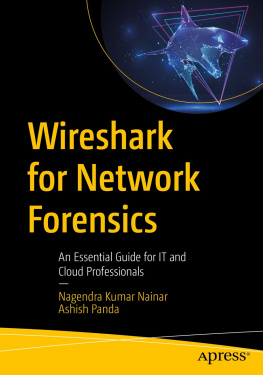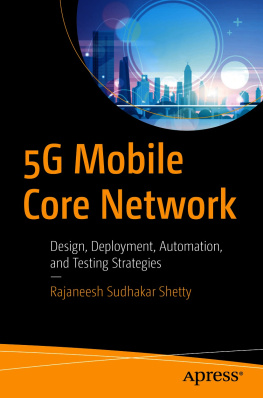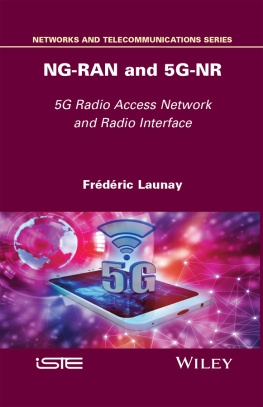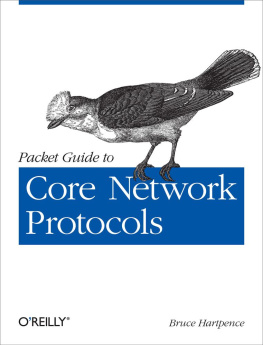THE 5G NETWORK ARCHITECTURE
A Guide That Covers Everything About The 5G Technology
CYRUS JACKSON
TABLE OF CONTENTS
CHAPTER 1
HOW TO USE THIS BOOK EFFECTIVELY
Hi there, great to meet you!
I want to personally thank you for buying a copy of The 5G Network Architecture , a guide that covers virtually everything you need to know about the 5G technology .
I really appreciate the trust and believe you placed on me to give you the needed information about The 5G Network.
Ive laid out this book in simple steps with graphics to guide on virtually everything you need to know about the new 5G network technology.
So, if you want to get the best out this book, heres what I recommend you do:
Im confident that you will learn a lot of valuable information from this awesome book.
CHAPTER 2
INTRODUCTION
5G is the fifth generation of wireless data networks and technology.
The best part?
Itll definitely transform the way network are being used far better than what 3G and 4G combined could ever try to accomplish.
I mean, youll feel the impact of the 5G technology virtually anywhere you find yourself: in your phone, when youre at home, and in the city you live.
The process of making downloads and streaming online will happen faster than the blink of your eye.
With the 5G network, what seems to be virtually impossible will come true in real life like Cars communicating with each other in other to prevent collisions and accidents .
You would even be able to download a complete movie under 3 seconds (which is even faster than the blink of an eye).
Yes, thats not a typo. Amazing, right?
This will definitely be the stepping stone for amazing technology advancement and wild imaginations like autonomous driving, internet of things, and lot more.
Can you beat that?
CHAPTER 3
WHAT IS 5G TECHNOLOGY ALL ABOUT?
Now, the million dollar question is what is the 5G network all about?
In other words, what exactly is a 5G network, how does it work, and whats all the hype (whats even special about it) about this technology?
There are 5 brand new technologies that serve as a foundation of the 5G network which makes it possible to carryout amazing functionalities:
Millimeter waves.
Small cells.
Massive MIMO.
Beamforming.
Full duplex.
Lets dive into each of the type of network so youve a good understanding how what they are, how they work, and what they can do :
High Bandwidth
As good as the 4G network, it can only produce about 200MB (Megabyte) of data per seconds on a very good day.
Now, the 5G network can muster up to 1GB (Gigabyte) of data per seconds which is amazing.
Thats about 1000MB per seconds which is 10 times better than then4G technology.
Thats very interesting.
Millimeter Waves
It goes without saying that the phone you make use for your daily activities and some of the electronic devices in your homes and offices make use of a specific amount of frequency as distributed by the Radio Frequency Spectrum which is usually less than 6GHz (Gigahertz).
The issue is that these frequencies are starting to get more crowded by equipments using it and frequency carriers can only squeeze so many bits of data on the same amount of radio frequency spectrum.
Which explains why when more and more devices come online; there tend to be a slower network of service and connections dropping rate skyrockets.
Now, how do you handle such a situation like this?
The solution is to open up some new networks which explains why researchers are experimenting with broadcasting on shorter millimeter waves specifically those that fall between 30 and 300 GHz (Gigahertz).
This section of spectrum has never been used before for mobile devices or even electronics and opening it up means more bandwidth for everyone but there is a catch: Millimeter waves can't travel at a faster pace when there are buildings, obstructions, and obstacles hindering their free movement.
In fact, they get easily absorbed by plants and rain.
So, how do we get around this problem?
Basically, thats where another technology comes into play which is called Small Cells .
Small Networks
The wireless network of today rely heavily on large-powered cell towers placed very high above the ground to easily disseminate their signals and frequencies over long distances for usage.
But theres an issue in that kind of deployment because higher-frequency millimeter waves find it difficult to travel through obstacles and building.
What this means is that once you move behind one, youll most likely lose your signal.
Thats where small cell networks solve the problem by using thousands of low-power mini base stations.
These base stations would be much closer together than traditional towers forming a live which is similar to a relay team to transmit signals around obstacles .
This would be very useful in cities because there is virtually no way a user would be able to stick to a particular position.
In other words, as the user moved behind an obstacle or a building, his Smartphone would automatically switch to a new base station in a better range of his device allowing him to keep his connection without shutting him out.
Awesome, right?
Massive MIMO
Simply put, MIMO stands for Multiple-input Multiple-output.
Today's 4G base stations have about a dozen ports for antennas that handle all cellular traffic but massive MIMO base stations can support about a hundred ports.
This could increase the capacity of today's networks by twenty two or even more.
Of course, Massive MIMO (Multiple-Input Multiple Output) comes with its own complications as with every technology .
The cellular antennas used today broadcast information in every direction at once and these causes jamming of signals, dropped connections, and lots of interference which brings us to the next technology called Beamforming .
Beamforming
Beamforming is like a traffic signaling system for cellular signals and network.
Instead of broadcasting in every direction, it would allow a base station to send a focus stream of data to a specific user.
This awesome precision prevents interference and is far more efficient.
Which means base stations could handle more incoming and outgoing data streams at once.
Here's how it works:
For example, if you're in a cluster of buildings and you're trying to make a phone call and your signal is ricocheting off the surrounding buildings and criss-crossing with other signals from users in the area as well.
What a massive MIMO (Maximum Input Maximum Output) base station does is that it receives all of these signals and keeps track of the timing and the direction of their arrival respectively.











